| ABOUT
VILAGE DUBRAVICA |
|
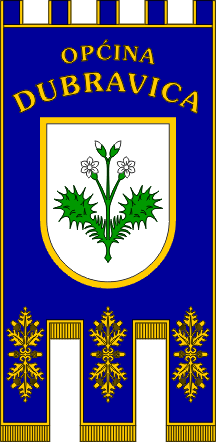 Dubravica
is a community in north-western corner of the Zagreb County
some 20 km NW of Zagreb. Population about 5,500, the main
vilage of the same name having no more then about 500.
In 1992 when the administrative reform in Croatia was
made the region was prescribed to be part of the community
of Hruševec Kupljenski, however this was against the wish
of the local population and such community was never constituted.
Rather the community of Dubravica was estabished already
in 1995. Dubravica
is a community in north-western corner of the Zagreb County
some 20 km NW of Zagreb. Population about 5,500, the main
vilage of the same name having no more then about 500.
In 1992 when the administrative reform in Croatia was
made the region was prescribed to be part of the community
of Hruševec Kupljenski, however this was against the wish
of the local population and such community was never constituted.
Rather the community of Dubravica was estabished already
in 1995.
The community symbol bacame a rather unusual endemic carnivorious
plant named in Croatian 'rosika' (in local dialect 'rozga').
The Coat of Arms is: Agrent a 'rosika' plant vert with
two thorny traps and with two flowers and two buds both
of the first. The flag is blue with the coat of arms bordered
golden. The Ceremonial Flag is a blue golfalon with three
rectangular tails containing oak ornaments, the coat of
arms is in the middle and the name of the community above
in two arches.
Sources: Puhacki orkestar Rozga, "www.orkestar-rozga.hr",
10.06.2004. Prigorski Kaj, mjesecnik Grada Zaprešica,
2003
Zeljko Heimer, 10 June 2004
 The plant seems to be a Drosera. The genus Drosera is
the type of the family Droseraceae. Droseras are small
plants which trap insects on their leaves, covered with
sticky glandulous hairs, and slowly "digest"
them by releasing proteolytic enzymes. The droseras lives
in marshes and peat bogs, where their dense colonies can
form kinds of floating mats. The most common drosera is
Drosera rotundifolia. All droseras are endangered and
protected, although it is difficult to avoid trampling
them in places where they are very common, as for instance
the Lofoten island in northern Norway.
The plant seems to be a Drosera. The genus Drosera is
the type of the family Droseraceae. Droseras are small
plants which trap insects on their leaves, covered with
sticky glandulous hairs, and slowly "digest"
them by releasing proteolytic enzymes. The droseras lives
in marshes and peat bogs, where their dense colonies can
form kinds of floating mats. The most common drosera is
Drosera rotundifolia. All droseras are endangered and
protected, although it is difficult to avoid trampling
them in places where they are very common, as for instance
the Lofoten island in northern Norway.
Another plant of the same family is Aldrovandia vesiculosa,
an insectivorous plant which was already marked RRR (that
is very very rare) in the plant guides of the beginning
of the century and might have disappeared from France
today. Digesting insects help these plants to survive
in a very acid, poor in nitrogen environment.
In English, the common name of the drosera is sundew.
In French, the traditional name of the drosera is rossolis,
which seems to be cognate of rosika and rozga. The name
rossolis was derived from Latin ros solis, sun dew. The
plant is also called rosee-du-soleil (lit., sundew) and
herbe-a-la-rosee (lit., dew herb). The scientific name
Drosera was of course coined by Carl Linne, and means
"covered with dew" in Ancient Greek. This sun
dew is made by the droplets of glue secreted by the hairs
of the plants, which glisten in the sun. I have no evidence
on this, but I won't be surprised if "dew" production
was synchronized with the sunrise, when insects start
to fly here and there and visit flowers.
The drosera was a matter of controversy among botanists.
The great botanist Gaston Bonnier (1853-1922), who popularized
botany, wrote several flores portatives for plants, mosses
and lichens, and did also several interesting research
work, refused to admit that the droseras were carnivorous
plants. Another famous author of plante guides, Paul Fournier,
presents the droseras as carnivorous, with the following
footnote full of respect and probably also irony: "Bonnier
claims the opposite; however, his opinion is no longer
tenable".
The rossolis (here related to rose) was also a liquor
made of burned brandy, sugar and cinnamon. Louis XIV enjoyed
the rossolis du Roy, made of Spanish wine, brandy and
other products as advized by his doctors. They also told
him that sport was god for his health, that was playing
billiards and go hunting in his coach. Louis XIV, in spite
of several congenital diseases and malformations, died
at the very respectable age of 77 years, after a 72 year
reign.
|
TOWN
ZAPREŠIĆ AND SURROUNDINGS
Zaprešić
The town of Zaprešić, centre of the entire area, is located
17 km west of Zagreb, at an elevation of 130 m. It is situated
on a regional road and railway, along the international railroad
Zagreb - Ljubljana - Central and Western Europe. The economy
of this town with a population of 20,000 is based on manufacturing
of ceramics, porcelain and fireproof goods, chemical and metalworking
industries and production of industrial gases.
Jelačić's Novi Dvori
Castle
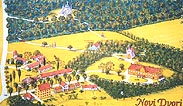 The
town itself and its immediate vicinity feature a number of attractions
for visitors. The most beautiful and interesting are castles.
One should certainly mention the Jelačić's Novi Dvori Castle,
a unique monument of cultural and historical heritage, located
only 1.5 km from the centre of Zaprešić (20-odd km from Zagreb),
along the road leading to the region of Croatian Zagorje. The
castle is a unique example of preservation of the integral landed
estate. Although being an exceptionally valuable monument, after
1945 the estate was left to deteriorate. Its partial reconstruction
started in 1991.
The
town itself and its immediate vicinity feature a number of attractions
for visitors. The most beautiful and interesting are castles.
One should certainly mention the Jelačić's Novi Dvori Castle,
a unique monument of cultural and historical heritage, located
only 1.5 km from the centre of Zaprešić (20-odd km from Zagreb),
along the road leading to the region of Croatian Zagorje. The
castle is a unique example of preservation of the integral landed
estate. Although being an exceptionally valuable monument, after
1945 the estate was left to deteriorate. Its partial reconstruction
started in 1991.
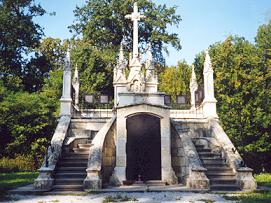 The
Novi Dvori complex, covering an area
of 20.5 ha, comprises a castle, St. Joseph's chapel, the Jelačić
family vault, a landscape garden, an orchard, residential and
estate buildings, a vegetable garden, arable land and a forest
park. The Novi Dvori Castle was mentioned under the name Curia
nova as early as the end of the 16th century, as one of the
mansions of the nobility of Susedgrad and Stubica, owned by
the Zrinskis, owners of Susedgrad (Stari Dvori). However, in
a document certified by the court in 1852, the foundation year
mentioned was 1611. The Novi Dvori was at that time merely a
two-storey manor, built mostly of wood.
The
Novi Dvori complex, covering an area
of 20.5 ha, comprises a castle, St. Joseph's chapel, the Jelačić
family vault, a landscape garden, an orchard, residential and
estate buildings, a vegetable garden, arable land and a forest
park. The Novi Dvori Castle was mentioned under the name Curia
nova as early as the end of the 16th century, as one of the
mansions of the nobility of Susedgrad and Stubica, owned by
the Zrinskis, owners of Susedgrad (Stari Dvori). However, in
a document certified by the court in 1852, the foundation year
mentioned was 1611. The Novi Dvori was at that time merely a
two-storey manor, built mostly of wood.
 Josip
Jelačić (1801-1859) was appointed the
Croatian viceroy in 1848 and held that office until his death.
He was remembered in history as the viceroy who abolished serfdom
in Croatia in 1848. In the second half of the 19th century,
a monument was dedicated to him on the central square of Zagreb,
made by the Viennese artist Anton Fernkorn. After the Second
World War the monument was removed and dismantled. Fortunately,
its parts were preserved so that in 1990 the monument could
be reconstructed and returned to the central square, which was
again named Jelačić's Square.
Josip
Jelačić (1801-1859) was appointed the
Croatian viceroy in 1848 and held that office until his death.
He was remembered in history as the viceroy who abolished serfdom
in Croatia in 1848. In the second half of the 19th century,
a monument was dedicated to him on the central square of Zagreb,
made by the Viennese artist Anton Fernkorn. After the Second
World War the monument was removed and dismantled. Fortunately,
its parts were preserved so that in 1990 the monument could
be reconstructed and returned to the central square, which was
again named Jelačić's Square.
Its owners were the Zrinskis, the
Čikulins, the Sermages, the Festetićs and the Erdődy Counts.
The Croatian viceroy Josip Jelačić bought it from the Erdődys
in 1851. The Jelačić family possessed the Novi Dvori until 1934,
when Đuro Jelačić's daughters, Vera and Anka, bestowed it under
their will upon the Croatian people.
Viceroy Josip Jelačić had commissioned
the reconstruction of the castle and of the entire estate. In
the eastern part the castle was extended for 18 metres, the
upper storey was also extended and reconstructed, the roof was
covered with roof tiles, the front and a large cellar were redecorated.
The landscape garden around the castle was also made. In 1855,
on a lawn near the castle, Jelačić had a neo-Gothic chapel of
St. Joseph built. When, in September 1855, his nine-month-old
daughter Anna suddenly died in Bohemia, a tomb was made in the
chapel. Viceroy Josip Jelačić was also buried in the same tomb,
on 26 May 1859, and his brother Antun, in 1875. After 1945 the
chapel was plundered and the tomb desecrated. In February 1991,
before the reconstruction of the chapel, the remains were temporarily
placed at Mirogoj Cemetery and in October 1992 again buried
into the reconstructed family vault. The neo-Gothic family vault,
made of white stone (brought from the Cathedral after it had
been severely damaged by an earthquake) according to designs
by H. Bollé, was made by the sculptor I. Franz in 1884. Count
Đuro Jelačić had it built under his brother Josip's will.
The preserved and partly reconstructed
estate buildings are also very valuable. The round thresher
is the oldest installation of the kind in Croatia, dating back
to the 17th century. In 1987, the former three-storey granary
was turned into the "Matija Skurjeni" Gallery. It
houses a permanent display of paintings by the famous naive
art painter Skurjeni, as well as an exhibition of historical
photographs "Novi Dvori Jelačićevi".
From One Castle to
Another
 The
Lužnica Castle is a two-storey Baroque structure. It
was built at the beginning of the 18th century. This first-category
monument is located 1 km from Zaprešić and was once owned by
the Rauch family. It has three wings and a U-shaped ground plan.
The central wing is distinguished by a projection, with cylindrical
towers on the corners. Above the main entrance, opposite the
park, there is a large balcony. The fronts above the windows
are ornamented with a variety of fine relief busts. The castle
chapel features a rococo-style altar.
The
Lužnica Castle is a two-storey Baroque structure. It
was built at the beginning of the 18th century. This first-category
monument is located 1 km from Zaprešić and was once owned by
the Rauch family. It has three wings and a U-shaped ground plan.
The central wing is distinguished by a projection, with cylindrical
towers on the corners. Above the main entrance, opposite the
park, there is a large balcony. The fronts above the windows
are ornamented with a variety of fine relief busts. The castle
chapel features a rococo-style altar.
 The
Januševec Castle, 6 km west of Zaprešić,
is the most beautiful classicist-style castle in Croatia. It
was commissioned, most probably around 1830, by General Vrkljan,
the minister of Marie-Louise, the Grand Duchess of Parma, Napoleon's
second wife. Plans were probably made by B. Felbinger. Later,
in 1845, the castle was sold to E. Corberon; afterwards it frequently
changed its owners. In May 1945 it was heavily damaged by explosions.
The building reconstruction has been performed. The castle has
a rectangular ground plan; the major north-south axis is emphasized
by colonnaded porticoes and on the western side there is a loggia.
The central round hall has an 11-m high dome. Some of the rooms
in Januševec used to be adorned with mural paintings displaying
panoramic views of various towns. There is a park around the
castle. Januševec is a monument of the highest category.
The
Januševec Castle, 6 km west of Zaprešić,
is the most beautiful classicist-style castle in Croatia. It
was commissioned, most probably around 1830, by General Vrkljan,
the minister of Marie-Louise, the Grand Duchess of Parma, Napoleon's
second wife. Plans were probably made by B. Felbinger. Later,
in 1845, the castle was sold to E. Corberon; afterwards it frequently
changed its owners. In May 1945 it was heavily damaged by explosions.
The building reconstruction has been performed. The castle has
a rectangular ground plan; the major north-south axis is emphasized
by colonnaded porticoes and on the western side there is a loggia.
The central round hall has an 11-m high dome. Some of the rooms
in Januševec used to be adorned with mural paintings displaying
panoramic views of various towns. There is a park around the
castle. Januševec is a monument of the highest category.
 The
Laduč Castle is situated 7 km from Zaprešić. It was commissioned
by the owner of the Laduč estate, Baron Vladimir Vranyczany,
and built by the architect K. Waidman in 1882. It is a two-storey
castle with a projection on the front. The monumental two-winged
stairway with stone balustrades leads to the rooms in the first
floor with their ceilings adorned with fine decorations by Ivan
Klausen. In front of the castle there is a French-style garden.
The
Laduč Castle is situated 7 km from Zaprešić. It was commissioned
by the owner of the Laduč estate, Baron Vladimir Vranyczany,
and built by the architect K. Waidman in 1882. It is a two-storey
castle with a projection on the front. The monumental two-winged
stairway with stone balustrades leads to the rooms in the first
floor with their ceilings adorned with fine decorations by Ivan
Klausen. In front of the castle there is a French-style garden.
The Baroque castle
of the Oršić family in Gornja Bistra was erected in the
second half of the 18th century. It is a two-storey structure
of congruous proportions and a U-shaped ground plan, with a
representative portal and a court chapel at its side. The central
oval hall features illusionist-style paintings of mythological
content from 1778. A large park with an alley surrounds the
castle. Gornja Bistra is a monument of the highest category.
 The
Jakovlje castle features a park with sculptures.
The
Jakovlje castle features a park with sculptures.
Churches of the Zaprešić region
 Castles
are not the only attraction of the Zaprešić region. One should
see other historical and cultural monuments. In the very town
of Zaprešić there is a monument memorializing the fallen in
the Homeland War, made by the sculptor Drago Grgas-Beli. There
is also a monument to the novelist Ante Kovačić, made by Jure
Žaja. Park sculptures by Lopatić, Vončina and Grgas are also
worth seeing. In Brdovec, 3 km northwest of Zaprešić, whose
first mention dates back to 1334, there is the Baroque parish
church of St. Vitus and a belfry with loopholes. The Native
Museum featuring historical and ethnographical collections was
opened in Brdovec in 1973. Within the Museum there is also the
Art Salon. The Baroque-style parish church of St. George in
Donja Pušća, 7 km north of Zaprešić, features three classicist
altars, the pulpit and the pew, as well as two chalices from
the 18th century. In the chapel of Our Lady "Čislavska"
there is a Baroque main altar from 1722, two rococo-style altars,
the pulpit with the Evangelists painted on it and a series of
painting depicting Stations of the Cross. Near the main road
there is a Baroque stone statue of St. Florian from 1778.
Castles
are not the only attraction of the Zaprešić region. One should
see other historical and cultural monuments. In the very town
of Zaprešić there is a monument memorializing the fallen in
the Homeland War, made by the sculptor Drago Grgas-Beli. There
is also a monument to the novelist Ante Kovačić, made by Jure
Žaja. Park sculptures by Lopatić, Vončina and Grgas are also
worth seeing. In Brdovec, 3 km northwest of Zaprešić, whose
first mention dates back to 1334, there is the Baroque parish
church of St. Vitus and a belfry with loopholes. The Native
Museum featuring historical and ethnographical collections was
opened in Brdovec in 1973. Within the Museum there is also the
Art Salon. The Baroque-style parish church of St. George in
Donja Pušća, 7 km north of Zaprešić, features three classicist
altars, the pulpit and the pew, as well as two chalices from
the 18th century. In the chapel of Our Lady "Čislavska"
there is a Baroque main altar from 1722, two rococo-style altars,
the pulpit with the Evangelists painted on it and a series of
painting depicting Stations of the Cross. Near the main road
there is a Baroque stone statue of St. Florian from 1778.
In Marija Gorica, 9 km from Zaprešić,
there is the parish (once Franciscan) church of Our Lady of
the Visitation from the mid-18th century. The Baroque church
has a quadrangular sanctuary, with the sacristy next to it,
and a belfry next to the main front. It features a wooden Gothic
statue of the Virgin Mary from the first half of the 15th century,
a tombstone with the relief portrait of the Ogulin captain M.
Mogorić from 1679, the Baroque-style main altar made of stone,
wooden side altars, confessionals, the pulpit (1762) and the
organ (1759). Not far from the church there is a parish mansion
and the monument to the novelist A. Kovačić, made by the famous
sculptor V. Radauš.
St. Nicholas' church in Poljanica
was erected in 1631 and restored in 1925. There is a monument
to the famous writer August Šenoa in Jablanovec. The famous
stone remnants known as "Kameni svatovi" (a stone
wedding procession) are also worth seeing.
The historical and cultural monuments
of the Dubravica municipality include the parsonage in Rozga,
the monument of the highest category, St. Anna's church in Rozga
(1842) and a chapel on the local cemetery in Rozga (part of
it dating back to 1609). Dubravica is the birthplace of Pavao
Štoos, whose house has a memorial plate. Natural attractions
of Dubravica include an eco-site - the natural habitat of insectivorous
plants, and the Cret forest in Lugarski Brijeg.
 The
municipality of Luka is full of typical Zagorje hills, streams,
marshes and groves. The area provides good opportunities for
excursions, recreational walking and angling. In Luka there
is also the famous excursion resort "Dva potoka",
Ulica B. Masnjaka 122, phone: +385 1 793-484, with accommodation
possibilities in rustic style.
The
municipality of Luka is full of typical Zagorje hills, streams,
marshes and groves. The area provides good opportunities for
excursions, recreational walking and angling. In Luka there
is also the famous excursion resort "Dva potoka",
Ulica B. Masnjaka 122, phone: +385 1 793-484, with accommodation
possibilities in rustic style.
Cherishing the Tradition
Old folk customs are cherished and the ethnological treasure
carefully preserved in Zaprešić and its surroundings. There
are two groups that greatly contribute to preservation of the
tradition - the Zaprešić majorettes "Jelačićke" and
the group called "Plemićka mladež Zaprešića" (The
Noble Youth of Zaprešić), that revives the days of Jelačić with
their luxurious ball toilets, officer uniforms and dances.
In the Brdovec area there are two
cultural societies, "Januševec" and "Mihovil
Krušlin". Famous is also the Parish Choir "St. Vitus".
In the municipality of Luka there is also a majorette group
called "Lučanke" and a brass band.
Zaprešić and its surroundings host
a number of traditional and occasional cultural and sports events.
In May and October, on the occasion of Jelačić's anniversaries,
the "Jelačić's Days" take place, a series of events
dedicated to the Viceroy. The carnival "Fašnički špancir"
takes place in February. In July, apart from the International
Folklore Festival in Zagreb, there is also the "Harvest
Festival". Among sports events one should mention the Croatian
motocross championship on Pepačev Breg in Savski Marof, traditionally
held on Easter Monday, the motor-gliding championship in May,
the riding events organized by "Trajbar Team" in May
and October, the table tennis event "Jože Vogrinec Memorial"
in June and the cycling event "V. Horvatić Memorial"
in September.
The municipality of Luka is known
for the traditional folk feast and patron saint's day - St.
Roch. Merry carnival processions are also organized.
Ornithological Reserve
 Nature
lovers and recreation enthusiasts are offered a number of opportunities
in the Zaprešić region. South of the Zaprešić centre, towards
the Sava, there is the Zajarki Lake, a large gravel pit. It
is a popular bathing place, visited by inhabitants of Zaprešić
but also Zagreb. Farther towards the Sava there is the ornithological
reserve Zaprešić-Sava, covered with groves and dense low vegetation,
and intersected with marshy meadows. It provides nesting and
migrating place for many birds. The nearby rivers, the Krapina
and the Sava with its tributaries, as well as the Zajarki Lake
(with a fish hatchery) provide excellent opportunities for anglers.
Zaprešić has two hunting societies, LD "Zaprešić"
and LD "Kuna" Jablanovec.
Nature
lovers and recreation enthusiasts are offered a number of opportunities
in the Zaprešić region. South of the Zaprešić centre, towards
the Sava, there is the Zajarki Lake, a large gravel pit. It
is a popular bathing place, visited by inhabitants of Zaprešić
but also Zagreb. Farther towards the Sava there is the ornithological
reserve Zaprešić-Sava, covered with groves and dense low vegetation,
and intersected with marshy meadows. It provides nesting and
migrating place for many birds. The nearby rivers, the Krapina
and the Sava with its tributaries, as well as the Zajarki Lake
(with a fish hatchery) provide excellent opportunities for anglers.
Zaprešić has two hunting societies, LD "Zaprešić"
and LD "Kuna" Jablanovec.
From Riding to Flying
 Zaprešić
and its surroundings are famous for sports. Apart from a football
stadium there are football grounds, sports halls, bowling alleys,
tennis courts, orienteering maps... The "Lamaki" Tennis
Club has outdoor and indoor tennis courts. There are also opportunities
to go in for rather unusual sports - baseball,
Zaprešić
and its surroundings are famous for sports. Apart from a football
stadium there are football grounds, sports halls, bowling alleys,
tennis courts, orienteering maps... The "Lamaki" Tennis
Club has outdoor and indoor tennis courts. There are also opportunities
to go in for rather unusual sports - baseball,  paragliding and motor-gliding. In the Riding club "Trajbar
Team" one can have a recreational ride, attend a "normal"
riding school or - which is rather rare in Europe - a sports
riding school under the guidance of a licensed coach. The club
has also an indoor riding hall, a café and a restaurant. The
motocross course on the hill Pepačev Breg in Prigorje Brdovečko
is very attractive for spectators. In its immediate vicinity
there are sports grounds of TC "Mont Antonio".
paragliding and motor-gliding. In the Riding club "Trajbar
Team" one can have a recreational ride, attend a "normal"
riding school or - which is rather rare in Europe - a sports
riding school under the guidance of a licensed coach. The club
has also an indoor riding hall, a café and a restaurant. The
motocross course on the hill Pepačev Breg in Prigorje Brdovečko
is very attractive for spectators. In its immediate vicinity
there are sports grounds of TC "Mont Antonio".
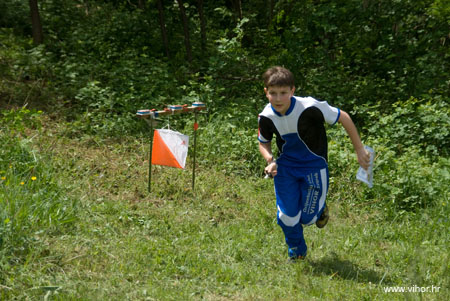
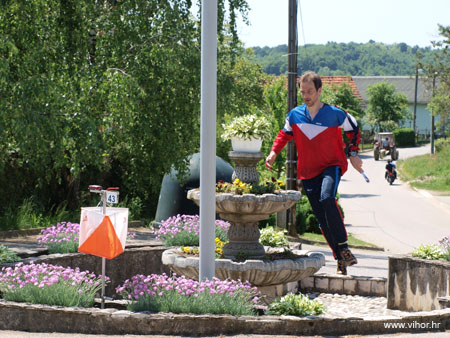
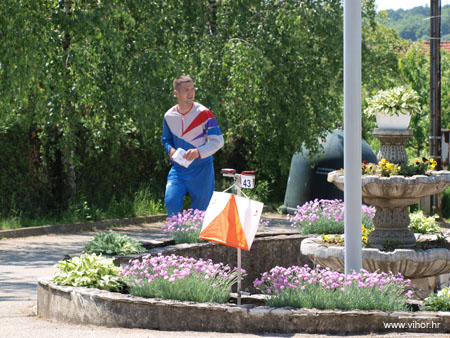
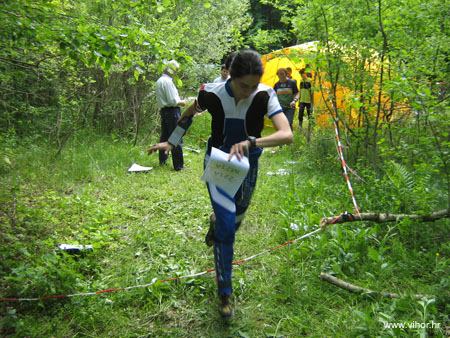
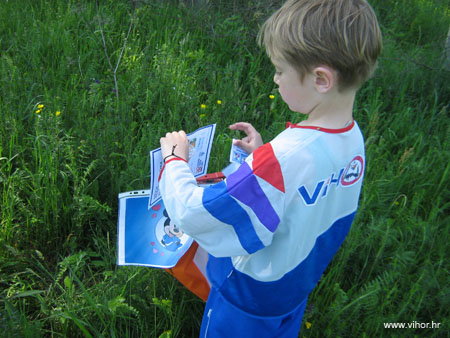
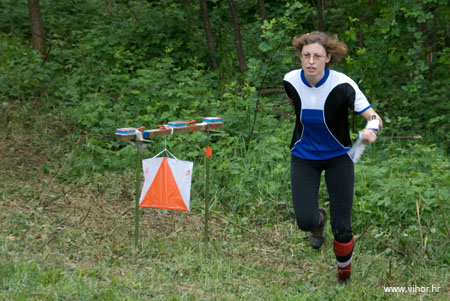
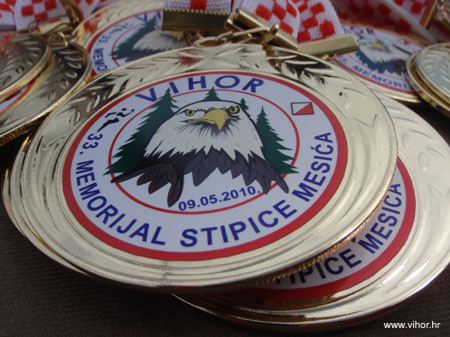
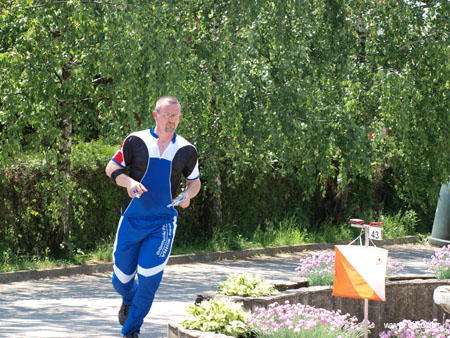
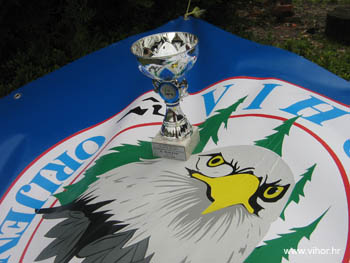

 Dubravica
is a community in north-western corner of the Zagreb County
some 20 km NW of Zagreb. Population about 5,500, the main
vilage of the same name having no more then about 500.
In 1992 when the administrative reform in Croatia was
made the region was prescribed to be part of the community
of Hruševec Kupljenski, however this was against the wish
of the local population and such community was never constituted.
Rather the community of Dubravica was estabished already
in 1995.
Dubravica
is a community in north-western corner of the Zagreb County
some 20 km NW of Zagreb. Population about 5,500, the main
vilage of the same name having no more then about 500.
In 1992 when the administrative reform in Croatia was
made the region was prescribed to be part of the community
of Hruševec Kupljenski, however this was against the wish
of the local population and such community was never constituted.
Rather the community of Dubravica was estabished already
in 1995. The plant seems to be a Drosera. The genus Drosera is
the type of the family Droseraceae. Droseras are small
plants which trap insects on their leaves, covered with
sticky glandulous hairs, and slowly "digest"
them by releasing proteolytic enzymes. The droseras lives
in marshes and peat bogs, where their dense colonies can
form kinds of floating mats. The most common drosera is
Drosera rotundifolia. All droseras are endangered and
protected, although it is difficult to avoid trampling
them in places where they are very common, as for instance
the Lofoten island in northern Norway.
The plant seems to be a Drosera. The genus Drosera is
the type of the family Droseraceae. Droseras are small
plants which trap insects on their leaves, covered with
sticky glandulous hairs, and slowly "digest"
them by releasing proteolytic enzymes. The droseras lives
in marshes and peat bogs, where their dense colonies can
form kinds of floating mats. The most common drosera is
Drosera rotundifolia. All droseras are endangered and
protected, although it is difficult to avoid trampling
them in places where they are very common, as for instance
the Lofoten island in northern Norway. The
town itself and its immediate vicinity feature a number of attractions
for visitors. The most beautiful and interesting are castles.
One should certainly mention the Jelačić's Novi Dvori Castle,
a unique monument of cultural and historical heritage, located
only 1.5 km from the centre of Zaprešić (20-odd km from Zagreb),
along the road leading to the region of Croatian Zagorje. The
castle is a unique example of preservation of the integral landed
estate. Although being an exceptionally valuable monument, after
1945 the estate was left to deteriorate. Its partial reconstruction
started in 1991.
The
town itself and its immediate vicinity feature a number of attractions
for visitors. The most beautiful and interesting are castles.
One should certainly mention the Jelačić's Novi Dvori Castle,
a unique monument of cultural and historical heritage, located
only 1.5 km from the centre of Zaprešić (20-odd km from Zagreb),
along the road leading to the region of Croatian Zagorje. The
castle is a unique example of preservation of the integral landed
estate. Although being an exceptionally valuable monument, after
1945 the estate was left to deteriorate. Its partial reconstruction
started in 1991.



 The
Laduč Castle is situated 7 km from Zaprešić. It was commissioned
by the owner of the Laduč estate, Baron Vladimir Vranyczany,
and built by the architect K. Waidman in 1882. It is a two-storey
castle with a projection on the front. The monumental two-winged
stairway with stone balustrades leads to the rooms in the first
floor with their ceilings adorned with fine decorations by Ivan
Klausen. In front of the castle there is a French-style garden.
The
Laduč Castle is situated 7 km from Zaprešić. It was commissioned
by the owner of the Laduč estate, Baron Vladimir Vranyczany,
and built by the architect K. Waidman in 1882. It is a two-storey
castle with a projection on the front. The monumental two-winged
stairway with stone balustrades leads to the rooms in the first
floor with their ceilings adorned with fine decorations by Ivan
Klausen. In front of the castle there is a French-style garden.

 The
municipality of Luka is full of typical Zagorje hills, streams,
marshes and groves. The area provides good opportunities for
excursions, recreational walking and angling. In Luka there
is also the famous excursion resort "Dva potoka",
Ulica B. Masnjaka 122, phone: +385 1 793-484, with accommodation
possibilities in rustic style.
The
municipality of Luka is full of typical Zagorje hills, streams,
marshes and groves. The area provides good opportunities for
excursions, recreational walking and angling. In Luka there
is also the famous excursion resort "Dva potoka",
Ulica B. Masnjaka 122, phone: +385 1 793-484, with accommodation
possibilities in rustic style. Nature
lovers and recreation enthusiasts are offered a number of opportunities
in the Zaprešić region. South of the Zaprešić centre, towards
the Sava, there is the Zajarki Lake, a large gravel pit. It
is a popular bathing place, visited by inhabitants of Zaprešić
but also Zagreb. Farther towards the Sava there is the ornithological
reserve Zaprešić-Sava, covered with groves and dense low vegetation,
and intersected with marshy meadows. It provides nesting and
migrating place for many birds. The nearby rivers, the Krapina
and the Sava with its tributaries, as well as the Zajarki Lake
(with a fish hatchery) provide excellent opportunities for anglers.
Zaprešić has two hunting societies, LD "Zaprešić"
and LD "Kuna" Jablanovec.
Nature
lovers and recreation enthusiasts are offered a number of opportunities
in the Zaprešić region. South of the Zaprešić centre, towards
the Sava, there is the Zajarki Lake, a large gravel pit. It
is a popular bathing place, visited by inhabitants of Zaprešić
but also Zagreb. Farther towards the Sava there is the ornithological
reserve Zaprešić-Sava, covered with groves and dense low vegetation,
and intersected with marshy meadows. It provides nesting and
migrating place for many birds. The nearby rivers, the Krapina
and the Sava with its tributaries, as well as the Zajarki Lake
(with a fish hatchery) provide excellent opportunities for anglers.
Zaprešić has two hunting societies, LD "Zaprešić"
and LD "Kuna" Jablanovec. Zaprešić
and its surroundings are famous for sports. Apart from a football
stadium there are football grounds, sports halls, bowling alleys,
tennis courts, orienteering maps... The "Lamaki" Tennis
Club has outdoor and indoor tennis courts. There are also opportunities
to go in for rather unusual sports - baseball,
Zaprešić
and its surroundings are famous for sports. Apart from a football
stadium there are football grounds, sports halls, bowling alleys,
tennis courts, orienteering maps... The "Lamaki" Tennis
Club has outdoor and indoor tennis courts. There are also opportunities
to go in for rather unusual sports - baseball,  paragliding and motor-gliding. In the Riding club "Trajbar
Team" one can have a recreational ride, attend a "normal"
riding school or - which is rather rare in Europe - a sports
riding school under the guidance of a licensed coach. The club
has also an indoor riding hall, a café and a restaurant. The
motocross course on the hill Pepačev Breg in Prigorje Brdovečko
is very attractive for spectators. In its immediate vicinity
there are sports grounds of TC "Mont Antonio".
paragliding and motor-gliding. In the Riding club "Trajbar
Team" one can have a recreational ride, attend a "normal"
riding school or - which is rather rare in Europe - a sports
riding school under the guidance of a licensed coach. The club
has also an indoor riding hall, a café and a restaurant. The
motocross course on the hill Pepačev Breg in Prigorje Brdovečko
is very attractive for spectators. In its immediate vicinity
there are sports grounds of TC "Mont Antonio".